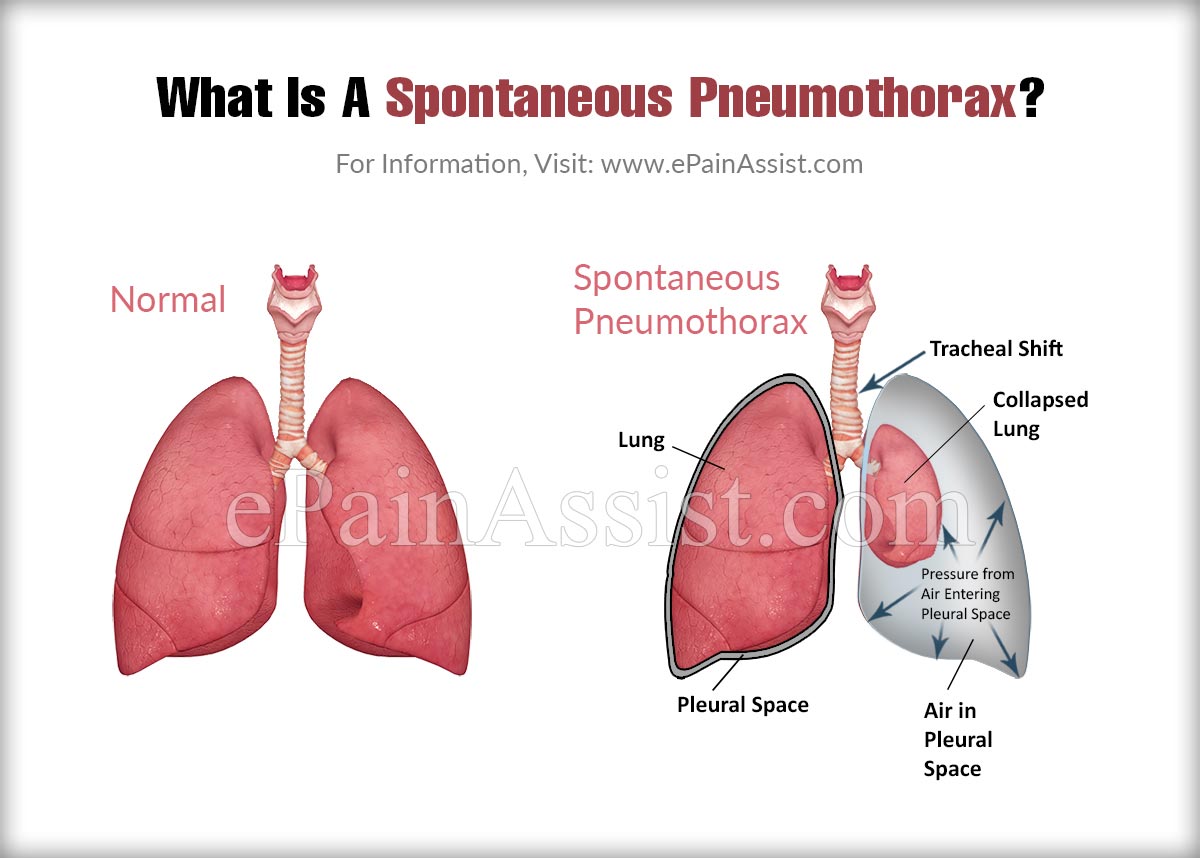A pneumothorax is a condition where there is an abnormal collection of air takes place in the pleural cavity. The pleural cavity is the space between the lungs and the chest wall. This cavity is usually filled with thin fluid and there is no air present in this space. When this cavity fills up with air it is called a pneumothorax.

What Is A Spontaneous Pneumothorax?
To see what a spontaneous pneumothorax is, let us first have a Look at the types of pneumothorax. There are different types of classification prevalent for pneumothorax. One that is widely seen states the types as non-traumatic and traumatic pneumothorax.
Traumatic pneumothorax occurs as a result of some trauma to the chest or lungs, by way of an injury or any clinical condition.
Non-traumatic pneumothorax again is classified further into two more types- primary and secondary. The non-traumatic type often occurs spontaneously, without any apparent trauma or injury. Hence, it is also known as spontaneous pneumothorax. The spontaneous pneumothorax therefore can be a primary spontaneous pneumothorax (PSP) or a secondary spontaneous pneumothorax (SSP).
Primary spontaneous pneumothorax gets its name because it is formed in the absence of a lung disease, like COPD or asthma. And it is spontaneous, as it is not associated with any injury. This type usually occurs because of the rupture of blebs in the lung tissue. Blebs are tiny sacs filled with air that are present on one’s lungs. They don’t present any typical symptoms and hence persons suffering from primary pneumothorax may not present with any prior symptoms. These blebs are visible only on imaging. Once a bleb ruptures and causes primary pneumothorax, the chances of recurrence are very high. Chest pain and difficulty in breathing are the prominent symptoms in a primary spontaneous pneumothorax.
Secondary spontaneous pneumothorax is associated with a significant lung disease. It occurs as a complication of this underlying lung disease. Many diseases like COPD, asthma, lung cancer, tuberculosis, cystic fibrosis etc. are associated with secondary pneumothorax. Dyspnea (impaired respiration) is the most prominent symptom in SSP. Along with dyspnea, chest pain, hypoxemia (reduced blood -oxygen), hypercapnia (increased blood carbon dioxide) and cyanosis may also be present. This may sometimes result in acute respiratory failure. As the normal lung functioning is already compromised in these cases, a secondary spontaneous pneumothorax can be a potentially life-threatening condition and therefore needs prompt medical attention.
Treatment of Spontaneous Pneumothorax
The treatment of pneumothorax can be as simple as leaving it alone to heal or a complicated one as inserting a chest tube. It largely depends on whether the pneumothorax is large or small, how severe the symptoms are and also the consideration of the associated lung disease if any.
Small spontaneous pneumothoraxes do not generally need any involvement as there are negligible chances of them precipitating into respiratory failure or tension pneumothorax. Whereas, for secondary pneumothoraxes, the conservative treatment is only used if the pneumothorax is really small in size and the presenting symptoms are also not very severe. Usually, hospitalization is recommended.
Aspiration is recommended in some large primary spontaneous pneumothorax and in few Secondary spontaneous pneumothorax of moderate size. This is however to be monitored very closely even after the procedure is complete. More recommendation is given to the insertion of chest tube, even if it is a primary spontaneous pneumothorax.
Surgery may be needed in case all of the above measures fail to give desired results.
After the episode or the treatment of spontaneous pneumothorax, the person may need a rest anywhere between a week to three weeks, depending on the severity of the disease and the mode of treatment carried out. Air travel has to be avoided for at least a week. So, must be underwater diving and other such activities.
Spontaneous pneumothorax may be just a nuisance like in a small primary spontaneous pneumothorax, or a serious affair as in a secondary spontaneous pneumothorax. Hence, it is advisable to report to the physician about any changes in normal breathing, promptly.
Also Read:
